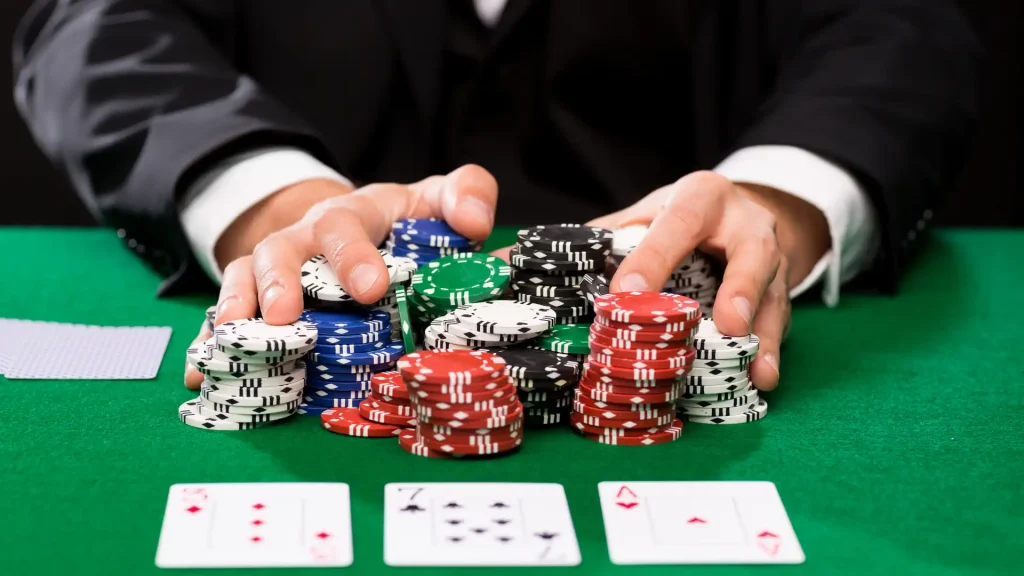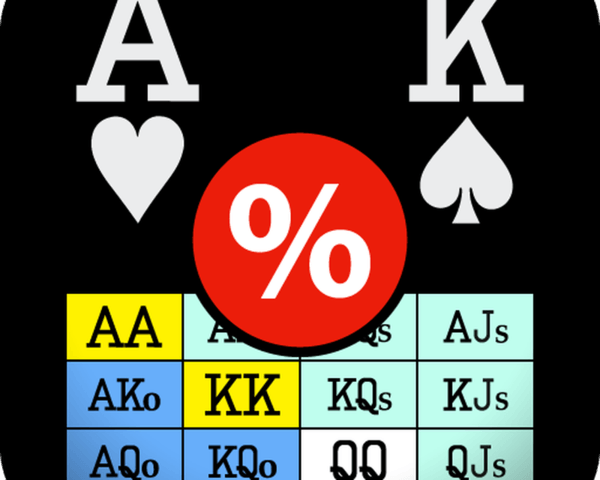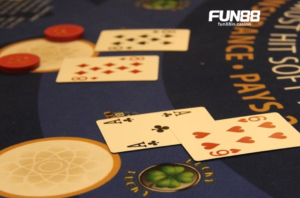Table of Contents
Winning in online Texas Hold’em isn’t easy, especially for players accustomed to traditional card games. Transitioning to online platforms can pose challenges. Fortunately, FUN88 offers many tools and strategies to help beginners adapt quickly and improve their skills. Therefore, to assist novice players in achieving success in online Texas Hold’em, this article will provide ten practical tips.
Firstly, we’ll delve into the fundamental skills of Texas Hold’em, assisting you in establishing a solid foundation. Next, we’ll explore probability calculations in Texas Hold’em, enabling you to make more precise decisions during the game. Additionally, we’ll offer tutorials on betting techniques to help you effectively manage your chips and increase your chances of winning. Lastly, we’ll introduce some advanced strategies for no-limit Texas Hold’em, allowing you to gain a more advantageous position in the game.
After learning these techniques, don’t forget to join FUN88 immediately to put your learning into practice and experience the thrilling poker battles firsthand.
Three Key Battlefield Techniques to Become a Texas Hold’em Poker Expert
To stand out in the world of Texas Hold’em poker, you must hone your skills and experience on three key battlegrounds. Firstly, in the “hand battle,” you must demonstrate your wisdom by accurately assessing each hand and betting at the right time. Familiarizing yourself with various hand types, mastering hand strength, and adopting appropriate betting strategies are all key to success in this arena.
Secondly, the “feng shui battle” is also a battleground you cannot overlook. Choosing the right seat at the table and using positional tactics allow you to better observe opponents’ actions, listen to their conversations, and assess their card strength. Utilizing advantageous positions is crucial for devising game strategies and improving your winning rate.
Lastly, the “psychological battle” is the most challenging battleground in Texas Hold’em. You need to learn to read opponents’ body language, discern their expressions and behaviors, and respond to various psychological tactics. Establishing confidence, maintaining composure, and not letting emotions affect you are key to achieving victory in this arena.
Stepping onto the battlefield of Texas Hold’em, mastering these three key battleground techniques is essential to becoming an outstanding Texas Hold’em player.
Texas Hold’em Key Technique – Hand Battle
Key techniques in the hand battle of Texas Hold’em can help you increase your winning rate and better manage the game. Here are some important hand battle techniques:
1. Properly utilize starting hands:
Having strong starting hands, such as AA or KK, undoubtedly gives you an advantage in the early stages of the game. However, the key is how to effectively use these hands and make reasonable decisions based on the game’s progress.
2. Pay attention to the cards on the table:
Beginners may need time to familiarize themselves with the rules and terminology, but paying attention to the communal cards on the table is crucial for judging the direction of the game. Understanding the possibilities of table card combinations and the potential card strength of other players is key to increasing your winning rate.
3. Don’t bluff just for the sake of bluffing:
While bluffing is part of Texas Hold’em, it’s not always effective in every situation. Bluffing may have no effect on players who frequently call. Therefore, use bluffing strategies timely and adjust based on your opponents’ behavior.
4. Don’t play every hand:
A common mistake is participating in too many hands. Raising the standards for selecting starting hands and decisively folding when you’re sure you can’t win can help you preserve chips and wait for better opportunities.
5. Money management is paramount:
Managing your chips well is crucial. Avoid frequent calling and fold disadvantageous hands at the right time to maintain a stable chip stack in the long run. Additionally, pay attention to the chip stacks of other players, as this will affect how you handle the game.
Mastering these hand battle techniques can help you make wiser decisions in Texas Hold’em and increase your winning rate. With accumulated experience, you’ll be able to better utilize these techniques and achieve greater success in the game.
Texas Hold’em Key Technique – Feng Shui Battle
In Texas Hold’em, positional strategy, or so-called “feng shui battle,” is crucial for devising game strategies and making decisions. Understanding the characteristics and strategies of different positions will help you better control the game. Here are some instructional tips on Texas Hold’em positional strategy:
Early Position (EP):
These are the positions after the blinds. Players in early positions need to carefully select starting hands because they cannot predict the actions of later players.
Small Blind (SB):
This position is to the left of the Dealer Button and is generally considered one of the worst positions. SB players must act first in most betting rounds, lacking information from other players when making decisions. Additionally, SB players are at a disadvantage when posting blinds because they must post half of the big blind before seeing their cards.
Big Blind (BB):
This position is to the left of the small blind and usually requires posting a full big blind before the game starts. While BB players are the last to act in the first betting round (unless the button player participates in betting), they are still at a relatively unfavorable position in the following betting rounds.
Under The Gun (UTG):
This position is to the left of the big blind and is the first to act before the flop, hence the name “under the gun.”
UTG+1:
This position is to the left of UTG and is also part of the early position.
UTG+2:
This position is the second player to the left of UTG.
Middle Position:
These positions are between early and late positions. Players in middle positions have more information than those in early positions and can make decisions based on the actions of early players but still need to be cautious.
Low Jack (LJ):
This position is to the left of UTG+2, where players can try to steal blinds.
High Jack (HJ):
This position is to the left of LJ and has a relatively better position than LJ.
Late Position:
This includes the button position and positions to its right. Players in late positions have the most information, can observe the actions of other players, and make more advantageous decisions.
Cut-off (CO):
This position is to the right of the button and has the second-best position at the table.
Button (BTN)/Dealer (D):
This is the best position in the game, having the power to act last in every round except before the flop, enabling players to make decisions based on the actions of all players.
Generally, the later positions (such as the button) are more advantageous because you can make wiser decisions based on the actions of other players. Understanding and utilizing the characteristics of each position will help improve your performance in Texas Hold’em.
Texas Hold’em Key Technique – Psychological Warfare
In Texas Hold’em, psychological warfare is an important aspect that cannot be ignored. Here are some instructional tips for psychological warfare:
Carefully observe player behavior:
Regardless of whether you are still in the game, observing the behavior of other players is crucial. Their betting patterns, language, and body language can all reveal the strength of their hand and their psychological state.
Maintain patience:
If you believe your hand is not good, you should decisively fold and not blindly call, wasting chips. Preserve your chips and wait for better opportunities to act.
Stay calm:
Texas Hold’em is like a battlefield, and maintaining calmness and composure is crucial. Do not let your emotions show on your face or in your betting, as this can prevent opponents from easily reading your hand.
Avoid playing when in a bad mood:
If you are not in a good mood or affected by other negative factors, it is best to avoid participating in the game. Emotional decisions are often irrational and can be easily exploited by opponents.
Mastering these psychological warfare techniques can help you stay rational, make better decisions, and increase your winning rate in Texas Hold’em. With accumulated experience, you will be able to better utilize psychological tactics and become a more outstanding Texas Hold’em player.
The probability data of Texas Hold’em.
In Texas Hold’em, being familiar with some basic probability data can help you make more reasonable decisions and increase your chances of winning. Here are some common Texas Hold’em probability data:
Probability of strong hands: The probability of having a strong hand like a pair of Aces or Kings is only 2.1%.
Flush probability: If you have four suited cards after the flop, the probability of completing a flush by the river is 34.97%.
Pair probability: The probability of pairing one of your two hole cards with the cards on the flop to form a pair is 32.43%.
Two pair probability: The probability of pairing each of your two unpaired hole cards with the cards on the flop to form two pairs is 2%.
Lucky draw probability: The probability of getting two specific cards to improve your hand on the turn and river is 0.3%.
Probability of any one card: In poker, the probability of drawing any specific card is 1.92%.
Consideration of flush: The difference between flush and non-flush is only 2.5%, so don’t enter the pot blindly just because you have two suited cards.
Probability of at least one pair: The probability of hitting at least one pair after the flop is 50%; for non-paired hands, the probability of hitting at least one pair on the flop is also 50%.
Straight probability: If you hit both ends of a straight on the flop, the chance of completing a straight by the river is 31.5%.
Pocket pair showdown: When two pocket pairs go head-to-head, the pocket pair with the higher rank has a winning probability of about 80%.
Understanding these probability data can help you make more reasonable decisions in the game, but remember, Texas Hold’em is not just about mathematical calculations; it also requires observation, strategy, and psychological tactics. Continue to hone your skills and incorporate this probability knowledge into your game strategy to improve your performance in Texas Hold’em.
Texas Hold’em Betting Tips
Texas Hold’em Betting Techniques
Betting is a crucial aspect of Texas Hold’em, not only impacting your wins and losses but also communicating information to your opponents. Below are some common Texas Hold’em betting techniques:
1. Pre-flop Raise
Raising during the pre-flop stage can reduce the number of opponents or even win the pot outright.
2. Value Betting
This often occurs during the river phase. When you have a strong hand, you can make a moderate bet to entice opponents to call, thus gaining more chips from them.
3. Overbetting
When attempting to bluff opponents, you can make an over-sized bet to intimidate them, potentially winning the pot through deception.
4. Check-Raise
First, portray weakness by checking, enticing opponents to bet, then raise to win more chips.
5. Defensive Betting
When you lack confidence in your hand, you can make a relatively small bet (about 1/4 to 1/2 of the pot) to prevent opponents from making large bluffs.
Mastering these betting techniques is crucial for improving your performance in Texas Hold’em. Remember, betting is not just about the size of the amount, but more importantly about timing and strategy. Flexibly applying these skills in FUN88 will help you achieve better results at the Texas Hold’em table.

















